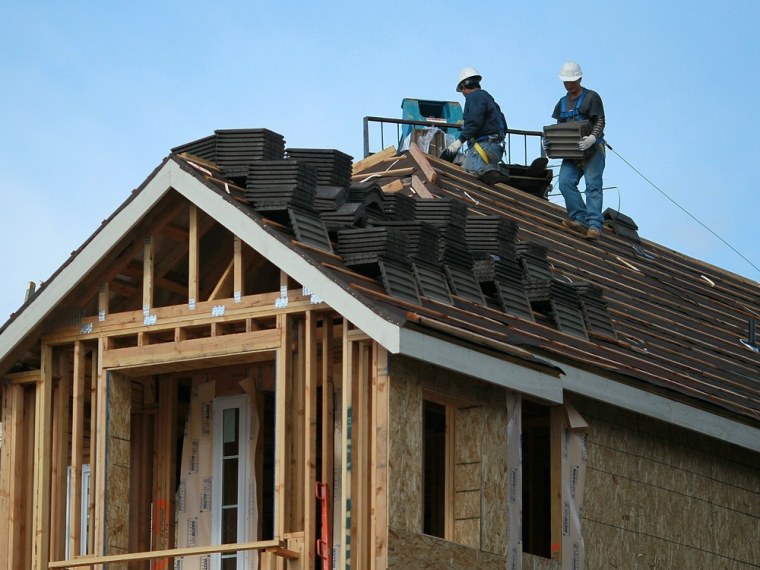Builders broke ground last month on the fewest homes in nearly two years and cut their requests for permits to start new projects to a five-decade low. The decline in construction activity is the latest evidence that the U.S. housing industry is years away from a recovery.
Home construction plunged 22.5 percent in February from January to a seasonally adjusted 479,000 homes, the Commerce Department said Wednesday. It was the lowest level since April 2009 and the second-lowest on records dating back more than a half-century.
The decline followed a surge in highly volatile apartment construction in January, which pushed the overall construction rate up to more than 600,000 units — the fastest rate in 20 months. Still, the building pace has been far below the 1.2 million units a year that economists consider healthy.
Single-family homes, which make up roughly 80 percent of home construction, fell 11.8 percent in February. Apartment and condominium construction dropped 47 percent, reversing much of January's gains.
Building permits, an indicator of future construction, fell 8.1 percent last month to the lowest level on records dating back to 1960. Permit requests for single-family homes saw the biggest decline. Apartments and condos remained flat.
Falling prices, sluggish sales and the weak construction rate all point to a housing market that is "stuck at a bottom of a steep hill," according to Moody's Analytics Economic Research.
"There are really large structural problems with the housing market," said Dan Greenhaus, chief economic strategist with Miller Tabak + Co. "This is not a run-up in oil prices. This is a multiyear build up in the housing market that is going to take more than several months or several quarters to get through."
For a housing recovery to take hold, the job market needs to improve and builders need to gain access to hard-to-get credit.
"Credit is flowing freely to large companies but not so much to the small builders," said Patrick Newport, U.S. economist for IHS Global Insight. "If builders cannot get financing to build new homes, housing will remain in the dumps."
Analysts said year-end building code changes in California, Pennsylvania and New York caused an artificial spike for permit requests in December and housing starts in January. Builders in those states rushed to file new permits before those changes went into effect.
Even with those gains, the housing market has struggled. Millions of foreclosures have forced home prices down and more are expected this year. Tight credit has made mortgage loans tough to come by. And some potential buyers who could qualify for loans are hesitant to enter the market, worried that prices will fall further.
The drop in home construction activity was felt coast to coast. It fell 48.6 percent in the Midwest, 37.5 percent in the Northeast, 28 percent in the West and 6.3 percent in the South.
The volatile housing market is weighing on the overall economic recovery. Each new home built creates, on average, the equivalent of three jobs for a year and generates about $90,000 in taxes, according to the National Association of Home Builders.
The trade group said Tuesday that its index of industry sentiment for March improved slightly to 17. That was the first gain in five months after four straight readings of 16. Still, any reading below 50 indicates negative sentiment about the housing market's future. The index hasn't been above that level since April 2006.
